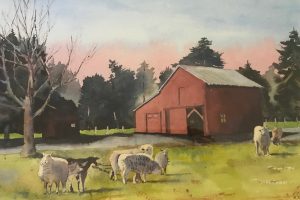COVID-19 Policy Simulator and Learning Environment
Public Outreach Division
Department of Disease Control (DCD)
Ali Mashayekhi, Emeritus Sharif University of Technology
Dan Gordon, Retired
NYS Department of Health
David Andersen, Emeritus
University at Albany-SUNY
Luis Luna-Reyes
University at Albany-SUNY
Part 1: About this Simulator
What is this Learning Environment? In March 2020, Ali Mashayekhi built a system dynamics model of the COVID-19 pandemic scaled to the nation of Iran. The model’s purpose was to inform policy design at the national level. Between March 2020 and March 2022, a team of modelers, epidemiologists, and educators expanded and refined the model and used it to produce insights into the pandemic with lay persons as the audience. In March 2022, Luis Luna-Reyes wrapped a version of Ali’s model in a Forio interface to be used as a simulator for his capstone class in public policy at UAlbany.
How to use this Learning Environment? Do NOT expect the simulator to produce credible point predictions. DO expect to use it to explore broad patterns of cause-and-effect within a complex pandemic system. Make use of the “what if” nature of simulations to explore in a counter-factual way what might have happened (but did not actually) as some aspect of the pandemic unfolded over time. Use this simulator as a laboratory to conduct controlled experiments about the pandemic and the social response to it.
Tips for Using a Simulator as a Laboratory. When you are running simulations, do not change many settings at the same time. Make one-at-a-time changes. Before you push the “run” button for a simulation, make a prediction of what you think will happen in your “what if” simulation. Write down or sketch your prediction in a notebook or journal. After you do the run and examine the output, try to explain differences between what you expected and what the simulator actually did. In general, spend more time thinking about what is going on in the simulator and less time just making more simulations. Use the “Questions and Answers” section provided in this users’ manual to help you understand the causal assumptions that Ali and his team built into his simulator.
This Manual has Five Parts. We recommend that you work your way through this manual one step at a time, making a small number of suggested simulation runs for each part of the manual, thinking about what is going on in those simulations, and maybe even working through some of the sample questions provided at the end of each part (answer hints for the questions are provided in the appendix). Part 2 seeks to help you understand more about how epidemics arise and subside. These simulations explore what are the “naturally occurring” forces that drive surges and then remissions in epidemics and pandemics. Remember that every pandemic, even before the advent of modern medicine, has eventually subsided. Why is that? Part 3 explores interactions between the “natural” forces of the virus itself and our human countermeasures. The point of Part 3 is that the pandemic’s behavior over time is the result of complicated interactions between viral biology and human behavior. Part 4 is devoted to helping you understand the role of vaccines in controlling a pandemic. Lastly, Part 5 seeks to give you some insight into how the arrival of new and more infective variants, such as the Delta and Omicron variants, can change not just the gross numbers but also the dynamics of the epidemic.
Two “Modes” for Running this Simulator. The variables that you can control are grouped into two “modes” under the Scenarios/Policy Features tab. Mode 1 variables relate to the inherent properties of the virus and the human environment. Mode 2 variables relate to behavioral and programmatic responses to the epidemic1. With Mode 2 variables turned off you can use the Mode 1 variables to explore the “pure” or “inherent” behavior of the viral epidemic. With Mode 1 variables help constant, especially at their default values, you can use Mode 2 to explore the effects of human behaviors and interventions. If you are feeling adventurous, after you move through Mode 1 and Mode 2 simulations you can try out at ensembles of simulation runs that involve changes in both Mode 1 and Mode 2 variables, but make the changes in stages, one variable at a time.
Some Technical Details for using the Simulator. The “Dashboard” tab in the simulator presents the output from your simulations. You can show up to seven runs at the same time. The “Scenario/ Policy Features” tab allows you to design alternative scenarios or policies. The “Run Manager” tab allows you to select which runs you want to display or erase2.
Self-Test Questions for Part 1: About this Simulator
Q1: When doing policy analysis, what are “what if” (sometimes more technically call “counter-factual”) analyses and why are they important?
Q2: Why should you only change only one-thing-at-a-time when making policy simulation tests and runs?
Q3: Why does this learning environment have two “modes” of analysis?

